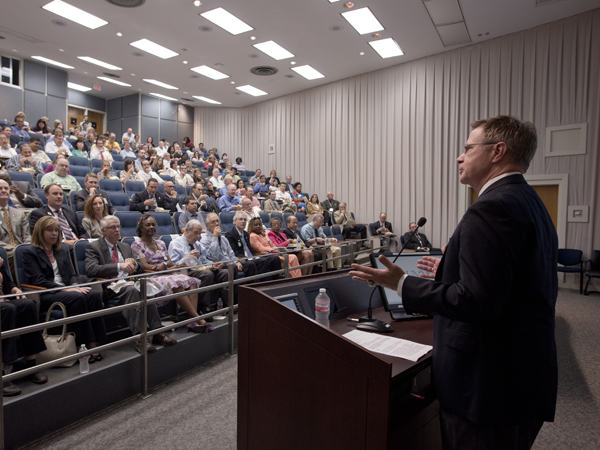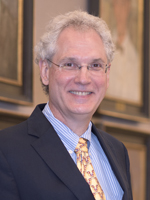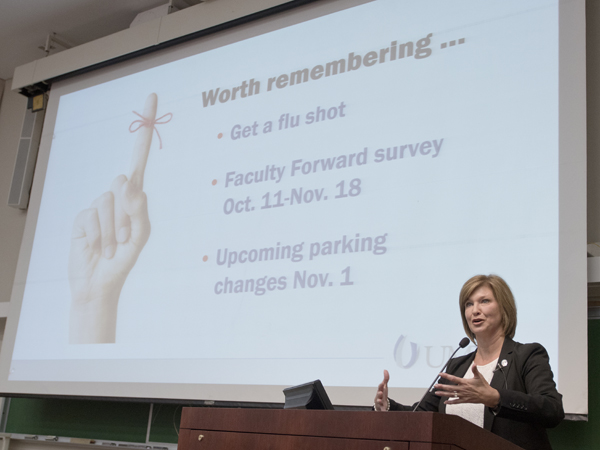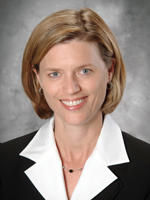Short minutes spent on survey could equal long-term progress

Published in News Stories on October 10, 2016
It takes about as much time to finish the new Faculty Forward Engagement Survey as it does to shower or clean the fridge.
That's about 20 minutes; but the answers could affect the Medical Center for years.
Beginning Tuesday, faculty will have online access to the survey, which is being offered for the first time to all schools on campus simultaneously, in an effort to measure, as the title implies, engagement.
To quote the official line of the Association of American Medical Colleges, which created the survey, “engagement” implies that faculty and staff are “cognitive and emotionally invested in the mission and activities of your organization.”

Smith
As Dr. Patrick Smith put it: “They are happy to go the extra mile. This leads to enhanced faculty performance, which leads to better patient care,” said Smith, professor of family medicine and chief faculty affairs officer.
In even simpler terms, the survey gauges job satisfaction. Areas of concern could lead to certain organizational changes.
Previous respondents, were asked, for instance, to indicate their level of agreement with such statements as:
- I am satisfied with my autonomy at work.
- My day-to-day activities give me a sense of accomplishment.
- My role here is clear to me.
- I am usually willing to give more than what is expected of me in my job.
- My supervisor actively encourages my career development.
- My supervisor listens to what I have to say.
For years now, the Medical Center has been a participant, but, until recently, the survey was reserved for medical schools. About one-third, or 47, of the nation's schools of medicine have taken part; some 30,000 faculty respondents are in the AAMC data base, Smith said.
Recommendations from faculty who responded to other surveys have brought welcome results, said Dr. LouAnn Woodward, vice chancellor for health affairs and dean of the School of Medicine.
In last Friday's edition of VC Notes, Woodward wrote, “Some of those changes have included improvements to the promotion-tenure process, broader faculty involvement in planning and priority-setting, and better communication from the vice chancellor's office, to name a few.
“The survey also shows us how we measure up against national benchmarks, pointing to areas where we compare favorably and others where we fall short.”

The University's School of Medicine faculty dived into the assessments in 2009, 2011 and 2014.
At the “nudging” of Smith and officials from other institutions, the AAMC expanded the scope and distributed a separate, pilot survey in February 2015. UMMC was one of seven universities and/or academic medical centers included in that trial run, which canvassed faculty in the schools of dentistry, health-related professions, nursing and pharmacy, and in the library (academic information services).
The current survey will lump together all schools, including the School of Medicine. After the results are in, an institutional task force will review the executive summary and make recommendations linked to each of the Medical Center's missions - research, education and health care, said Johnson George, director of faculty projects and process design.
Deans and other leaders will act on those proposals.
“It's important for the entire campus to participate in identifying common gaps and to take advantage of areas of excellence for the spread of best practices,” said Dr. Kim Hoover, dean of the School of Nursing.

Hoover
“The results of the 2015 [pilot] survey indicated that faculty valued diversity and that they desired more opportunities for development.” Within the School of Nursing, faculty survey findings can, she said, “validate and confirm” the comprehensive feedback collected during the school's annual strategy evaluation day.
AAMC's 2016 Faculty Forward Engagement Survey - which participants will have up to six weeks to complete - will be available via online links sent to all faculty, including those whose primary appointment is in graduate studies.
“The answers are confidential,” George said. “Only aggregate data will be used.”
It's not necessary to fill out the questionnaire in one sitting; answers are saved, and the link to the survey can be re-opened later.
The combined participation rate for the 2014 School of Medicine and 2015 pilot surveys was about 72 percent - 78 percent for the medical school and 65 percent for the faculty of the other combined schools that took part, Smith said.
“I would love to top those rates this time around,” Woodward said.
When a department chair knows what his or her faculty members are thinking, George said, that can lead to a dialogue to address their concerns, “and make this a better place for them.”


